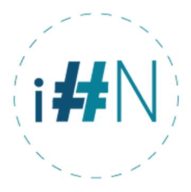Every few years I see a new organizational idea for homeschoolers sweep the internet. It is a different method every time. By reading many glowing blog reports of trying out the method, each method is presented as a sort of magical solution to all previous homeschool organization problems. However, if everyone’s problems were permanently solved there would be no room for the next sweeping organizational revolution.
The truth is that no one method can meet everyone’s needs. Another truth is that our children need different things at various ages and stages of development. Locking ourselves into a system forever often leaves us exhausted and wondering what went wrong a few years later. I have used many systems and they all have pro’s and con’s. Below is a list of popular ways to organize your students work and my thoughts on each.
Spiral notebooks: Each student has their own notebook and you write down their assignments for each day either the night before or in the morning.
Pro- Great for kids old enough to read.
Con- Mom has to write a list for each kid each day (maybe not a big deal if you don’t have a large family).
Workboxes: You have small drawers, cubbies, or bins, (I used giant envelopes for affordability and space saving), each bin gets a number and has one activity or assignment in it. Your child gets the bins in order and completes them one at a time until all the bins are empty.
Pro-This is great for pre-readers whom you cannot easily hand a written list to. I used this system for a time when I had 3 toddlers in the house, and 3 that were doing lower elementary school. Honestly, it was a life saver at the time, because even my school aged kids were pretty young, and needed the tangible unemptied envelope to know that their work was not yet done. I did not constantly have to tell the older ones what to do next while engaging in damage control with the littles.
Con- Mom has to restock all bins every evening. This was worth it to me for a certain season, but not long term.
Daily re-usable checklists: This would be a general list of what needs to be done every day that can be checked off or crossed out. You can laminate the list and use dry erase markers for checking things off.
Pro-Easy maintenance, make it once and you are done. Chores can easily be added to this list.
Con-You can only put tasks that are done every day on the list, and cannot be overly specific with the assignments. (For example you can list read 15 minutes, or read 10 pages, but you are not listing various book titles or stopping and starting pages.)
Detailed weekly checklist: This type of list could be jotted down in a teacher’s planning notebook, or on an excel spreadsheet. Here you will have not only each subject, but also what books your student is currently in and page numbers to be completed. This could also be done more than a week ahead if you wish.
Pro- No daily maintenance for mom and allows for detailed assignment to be given.
Con- Takes a larger chunk of time to write out the plan than daily lists. I will say this is a pretty popular planning method when moms want to plan the whole year out in detail in the summer. I think this method is the reason many moms give up on planning ahead. Life happens and our carefully constructed summertime dreams often don’t hit with all the glitter and glam we expect in the fall. Things can go off schedule easily and the plans we made so far in advance can quickly derail. If you want to plan detail in large chunks I would suggest not going more than 6-8 weeks in advance. You can still have a loose year-long plan, but give yourself room to adjust to the pace of real life, which often does not match the pace of life in our imagination.



One Response
[…] For tips on the strengths and weaknesses of different systems check this post. Four Ways to Get More Flow in Your Homeschool Day. […]